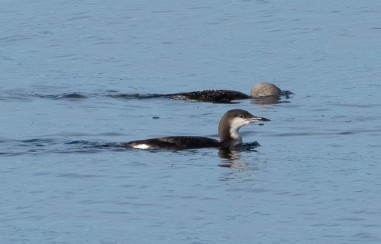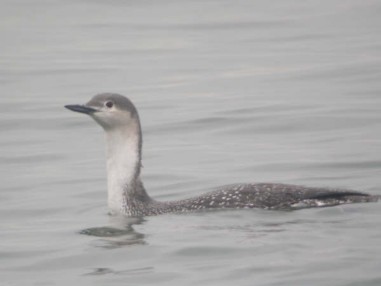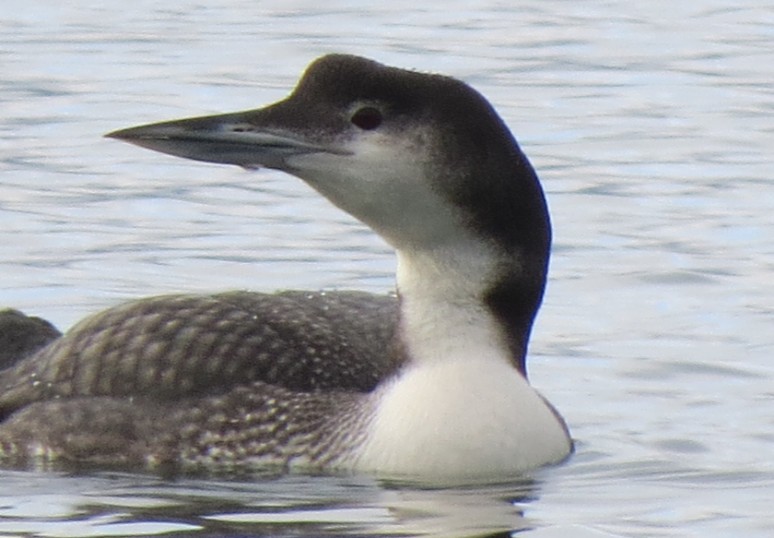Diver ID
Reports


Arran is fortunate in that three species of diver, Red-throated Diver, Black-throated Diver and Great Northern Diver can be seen most months around our coast. With their legs set well back on their body, their design is for diving. They can barely walk on land. All dive from the surface, sliding easily into the water head first with barely a ripple, unlike the more common Shags which tend to arch out of the water as they dive. All three divers can submerge for lengthy periods often re-appearing a long way from the initial dive.
Arran has one of the most southerly breeding populations of Red-throated Diver in the UK. Our coast is an area of national importance for the Black-throated Diver, when the bird is passing through in autumn. It breeds on large lochs with small islands in remote areas in the north of Scotland. The nearest breeding population of Great Northern Diver is Iceland.
Looking at your bird book, all three divers in their distinctive summer breeding plumage are easy to tell apart. In winter out of their breeding plumage, they are less distinctive and when they are bobbing about on a grey sea, identification can be a challenge but there are key features that can help tell them apart. Some are shown in these photographs taken round Arran's shores
The Red-throated Diver is the smallest. It is finely built with a small head, thin neck, and usually holds its head and bill pointing slightly upwards. It looks a bit aloof. (See photo top right)
The Black-throated Diver has a thicker neck and a straight bill. In addition, this diver is the only one to show a distinct white patch on the rear flank above the water level. (See photo top left)
The Great Northern Diver is the largest of the three with heavier features including a large dagger like bill. Its head is often an angular shape with a “bump” on the forehead.( See photo below)
While these illustrative photographs can help with identification, the moving images and helpful commentary in this short video are much better at highlighting the distinguishing features. Produced by the British Trust for Ornithology on Winter Divers - YouTube it is part of the excellent series of BTO Bird ID videos.
